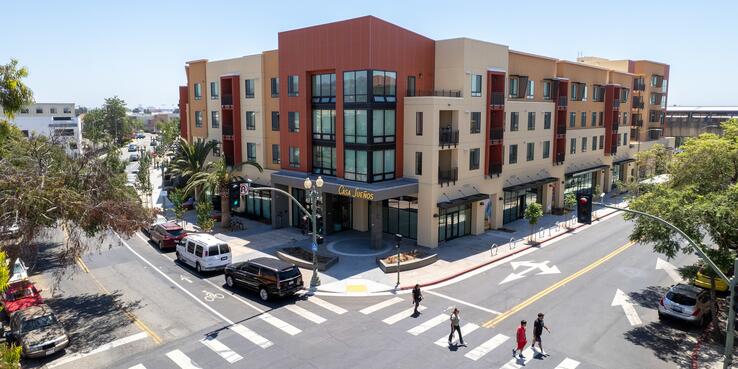Since the 1970s tax revolt, California’s constitution has required a two-thirds (or 66.666%) majority vote to pass most local bonds for essential services such as housing, infrastructure, and parks. This high threshold has made it challenging to address the growing needs of communities, particularly in providing affordable housing.
Measures that receive substantial support still often fail to pass due to the supermajority requirement. For example, a $400 million San Francisco Muni bond received 63% approval in 2022 but fell short of the two-thirds requirement. In 2018, San José’s Measure V, a $450 million affordable housing bond, failed despite garnering more than 64% of the vote. Similarly, Alameda County’s proposed fire district bond for fire protection failed with 66% of the vote. These near misses illustrate how the current rules make it difficult to fund critical projects.
How Would Proposition 5 Help Voters Invest in Community Priorities?
Prop. 5 aims to change the voting requirements for local bonds and property taxes used to fund affordable housing and infrastructure projects. The key change would be lowering the voter approval threshold from 66.666% of voters to 55%. This change would apply to funding for housing, fire and flood protection, libraries, public transit, and other vital services.
To ensure that bond funds are used appropriately, Prop. 5 introduces measures for transparency and accountability. Local governments would be required to form citizen oversight committees. These committees would monitor how bond proceeds are spent and would ensure that annual independent financial and performance audits are conducted, thereby giving local voters confidence that funds are spent as promised.
Why Is Prop. 5 Necessary to Meet the State’s Housing and Infrastructure Needs?
California is facing a severe housing shortage and crumbling infrastructure — challenges that disproportionately affect low-income communities. Yet many local governments struggle to raise the funds needed to address these challenges under the current two-thirds supermajority rule. Prop. 5 would empower local voters to make need investments without raising general taxes.
Under the current two-thirds rule, opposition from a small minority of voters can block important measures, even when a majority supports them. Prop. 5 seeks to overcome this barrier by allowing voters to have more control over funding for their communities. By lowering the voter approval threshold, Prop. 5 would reflect the will of the majority while maintaining strong oversight mechanisms.
The idea behind Prop. 5 isn’t new. In 2000, California voters approved Prop. 39, which lowered the threshold for passing school facility bonds to 55%. This reform has successfully funded much-needed improvements in school districts across the state. By applying the same principles to affordable housing and infrastructure, Prop. 5 can unlock local funding that leverages state and federal resources for even greater impact.
Prop. 5 Prevents Small Minorities from Blocking Critical Investments
Passing Prop. 5 would be a significant step in addressing California’s pressing housing and infrastructure needs. By lowering the voter threshold to 55%, local governments would be better equipped to raise funds for affordable housing and essential infrastructure while ensuring that spending is transparent and used as promised. This important reform could make a big difference in empowering communities to fund local priorities rather than being blocked by a small minority of voters. Having the ability to raise more dollars locally will also make it easier for local governments to compete for state and federal matching dollars.
Thank you to East Bay Housing Organizations for contributing to this article.
